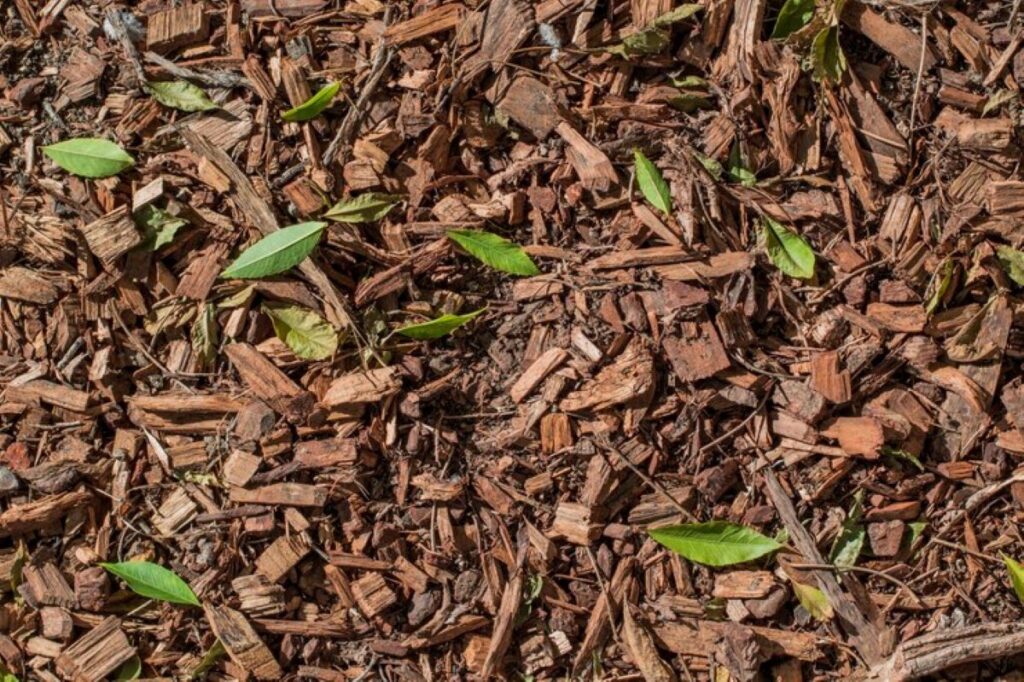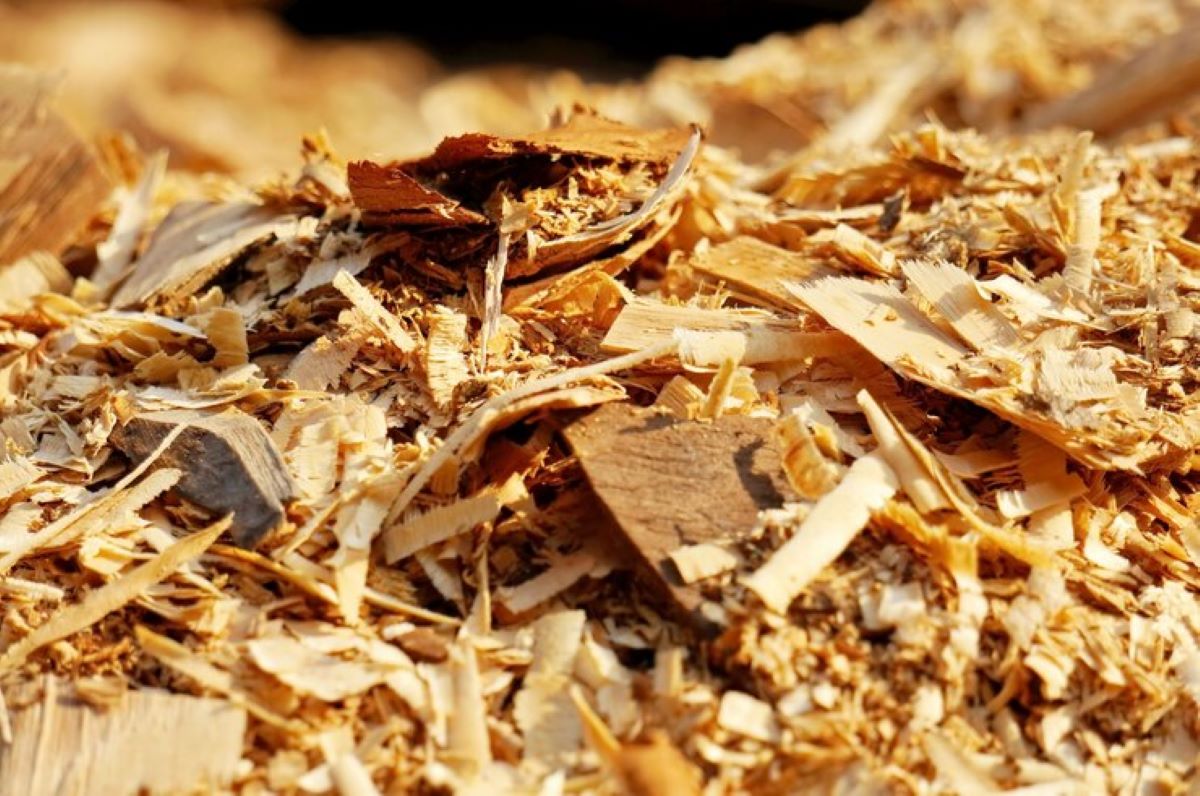When it comes to landscaping, selecting the right materials can make a significant difference in the overall aesthetics and health of your garden. Wood chips are a popular choice for many homeowners and landscapers, providing numerous benefits such as soil improvement and weed control. In this guide, we’ll explore the essentials of wood chips, helping you make an informed decision for your landscaping needs.
Understanding the Basics of Wood Chips
Wood chips are small pieces of wood that are created through the chipping or shredding of larger pieces of timber or tree limbs. They come in various sizes, colors, and types, each offering different benefits based on their composition and source.
These shredded materials are not just a byproduct of logging or landscaping; they are often produced by tree services and serve a variety of purposes, from decorative landscaping to functional soil enhancement. Knowing the different types of wood chips available will help you decide which is best for your specific needs.
Types of Wood Chips
There are several types of wood chips available on the market. Here are some of the most common:
- Hardwood Chips: Made from trees like oak, maple, and hickory, these chips are dense and offer longer-lasting mulch that decomposes slowly.
- Softwood Chips: Created from pine or cedar trees, softwood chips are lighter and may have aromatic qualities, which can repel pests.
- Colored Chips: These chips are treated with dyes to offer aesthetic appeal and can come in numerous colors, helping to enhance the visual aspects of your landscape.
Benefits of Using Wood Chips in Landscaping
Wood chips provide several advantages that are valuable for both aesthetic and practical reasons. Firstly, they help retain moisture in the soil, reducing the need for frequent watering. Secondly, they suppress weed growth, which can save you time and effort in maintenance.
Additionally, they can contribute to the overall health of your soil. As the chips decompose, they release nutrients that benefit your plants, creating a richer growing environment. Whether you’re planting flowers or establishing a vegetable garden, wood chips can play a key role in promoting healthy growth.
Moreover, wood chips can also serve as an effective erosion control measure. When spread across slopes or areas prone to runoff, they can help stabilize the soil and prevent the loss of valuable topsoil. This is particularly beneficial in regions that experience heavy rainfall or where the landscape has been disturbed. Furthermore, using wood chips can enhance biodiversity in your garden by providing habitats for beneficial organisms such as earthworms and beneficial insects, which contribute to a balanced ecosystem.
Another interesting aspect of wood chips is their role in sustainable gardening practices. By utilizing wood chips sourced from local tree trimming services or recycled materials, gardeners can reduce waste and promote a circular economy. This not only minimizes the environmental impact associated with transporting landscaping materials but also supports local businesses. Additionally, the use of organic wood chips aligns with eco-friendly gardening principles, making them a popular choice among environmentally conscious gardeners.
Factors to Consider When Choosing Wood Chips
Not all wood chips are created equal. When choosing the right wood chips for your landscaping project, several factors should influence your decision.
Color and Aesthetic Appeal
The color of wood chips can significantly affect the overall aesthetics of your landscape. Natural wood chips often have a rustic look that blends well with gardens, while colored chips can provide a more modern or eye-catching appearance.
Consider how the color will complement your existing plants and hardscaping features like paths and walls. Choosing the right color can enhance the visual appeal and create a harmonious landscape design.
Durability and Lifespan
Different types of wood chips vary in durability. Hardwood chips tend to last longer than softwood chips, making them a better option for pathways and areas with high foot traffic. On the other hand, softwood chips decompose more quickly and may need to be replenished more often.
Understanding the environment where the wood chips will be placed is critical. If you anticipate heavy use or exposure to the elements, opt for more durable options.

Cost and Availability
The cost of wood chips can vary widely based on the type, quality, and source. Hardwoods may be more expensive but can provide longer-lasting benefits. It’s also important to consider local availability; some types may be easier to source than others. Want to get detail about healthy woods let’s visit https://era.dpi.qld.gov.au/id/eprint/2039/
Look for local suppliers or ask about reclaimed wood chips, which can be cost-effective and environmentally friendly. Depending on your budget and needs, always compare different sources and types to find the best fit.
Matching Wood Chips to Your Landscaping Needs
Once you understand the basics, factors, and types of wood chips, the next step is to match them to your specific landscaping requirements.
Wood Chips for Soil Improvement
If your goal is to improve soil quality, selecting wood chips that decompose slowly is essential. Hardwoods typically break down more gradually, providing nutrients over a more extended period.
A layer of wood chips in your garden beds can enhance soil structure and promote healthy root development for plants, shrubs, and trees.
Wood Chips for Weed Control
For weed suppression, a thicker layer of wood chips is more effective. Aim for at least three inches of chips to create a barrier against sunlight, preventing weed seed germination.
Softwood chips can be beneficial in this regard, as their quick ability to break down can create a rich mulch that retains moisture while stifling weeds.
Wood Chips for Pathways and Play Areas
Using wood chips in pathways and play areas requires consideration of durability and safety. Opt for hardwood chips for their longevity and sturdiness underfoot.
Ensure the wood chips are free of sharp pieces to create a safe environment for both children and pets. Regular replenishment on pathways will ensure they remain functional and attractive.
How to Properly Install Wood Chips
Installing wood chips correctly ensures they work effectively for your landscaping goals. Here are some guidelines to help you get started.
Preparing the Area
Before adding wood chips, prepare the area by clearing out any existing weeds, grass, or debris. This step is crucial to ensure that the wood chips can perform their role in weed suppression and moisture retention efficiently.
After clearing, consider applying a layer of landscape fabric to further inhibit weed growth, which can keep your landscaping looking tidy for an extended period.
Applying the Wood Chips
When applying wood chips, spread them evenly around the desired area, ensuring a consistent depth of at least 2-4 inches. Pay special attention to avoiding any buildup against plant stems or tree trunks, as this can lead to rot.
Smoothing out the chips and refreshing them periodically can maintain the fresh look and function of your wood chip landscape.
Maintaining Your Wood Chip Landscape
Maintaining a wood chip landscape is as important as the initial installation. Regular care will ensure the longevity and effectiveness of your wood chips.
Replenishing Wood Chips
As wood chips decompose and settle, you may need to replenish them annually or biannually. Monitor the depth of your wood chips and top them up as necessary to retain their benefits.
Consider rotating the types of wood chips you use for replenishing to introduce fresh nutrients and aesthetic diversity to your landscape.
See Also : Wood Chip Mulch vs. Bark Mulch: Which One is Best for Your Garden?
Dealing with Potential Pests
Wood chips can sometimes attract pests, so it’s vital to keep an eye on your wood chip areas. If you notice an increase in insect activity, consider adding beneficial nematodes or introducing plants that can deter pests.
Regularly turning or mixing the chips can also help alleviate pest issues by disrupting their habitat and lifecycle.

Managing Decomposition and Nutrient Balance
As wood chips decompose, they can affect the nitrogen levels in your soil. To counteract this, consider adding a nitrogen-rich fertilizer or organic matter, such as compost, along with your wood chips.
Managing decomposition will create a balanced nutrient environment, supporting your plants’ health and growth for seasons to come.
In summary, choosing the right wood chips for your landscaping needs involves understanding the types available, considering durability and aesthetic appeal, and matching them to your specific landscaping goals. By following the steps outlined in this guide, you can create a beautiful, functional, and sustainable landscape that enhances your outdoor space.

